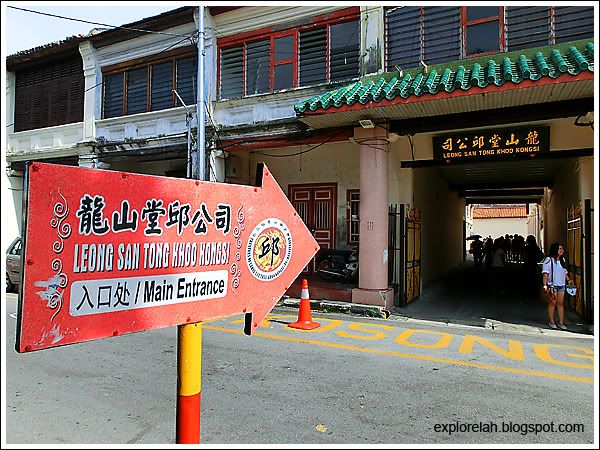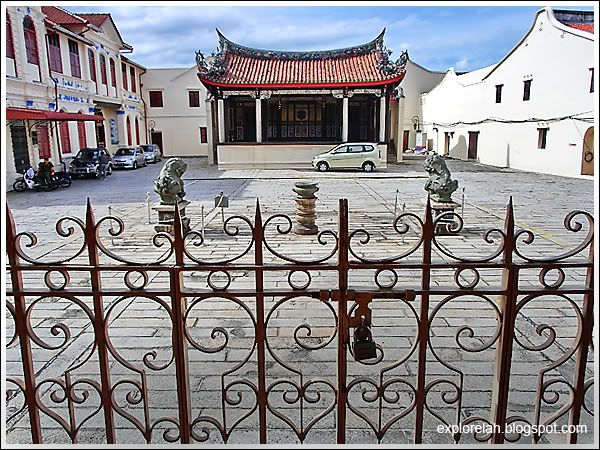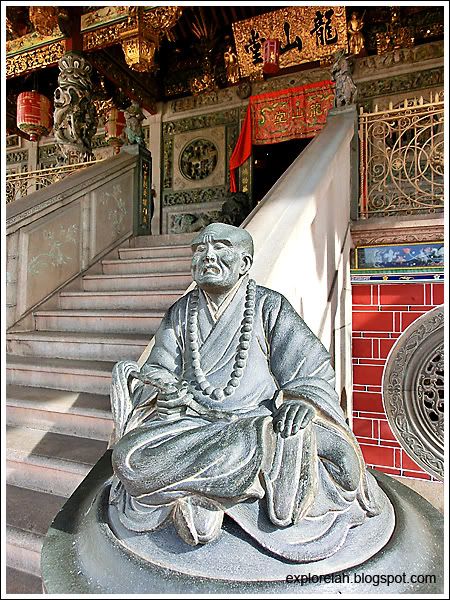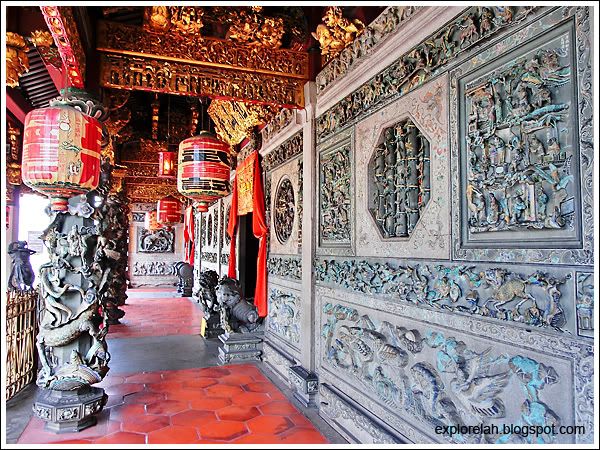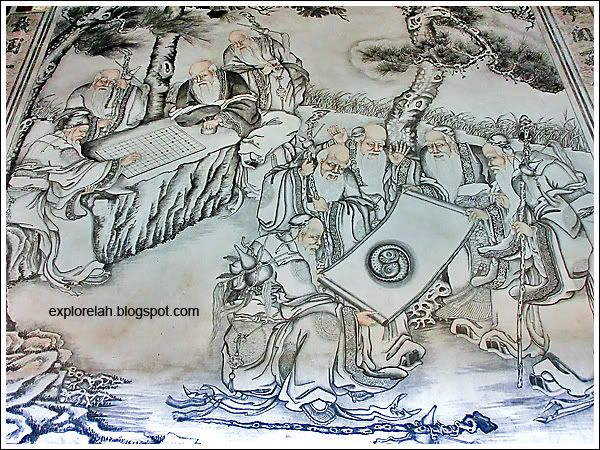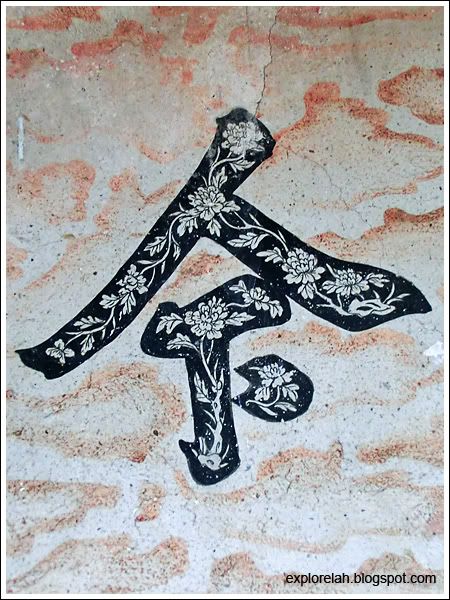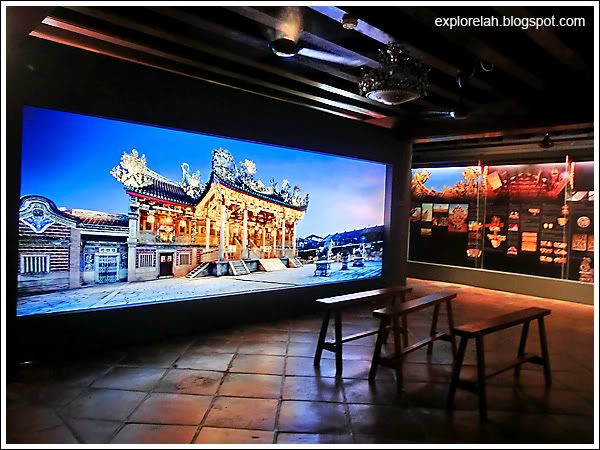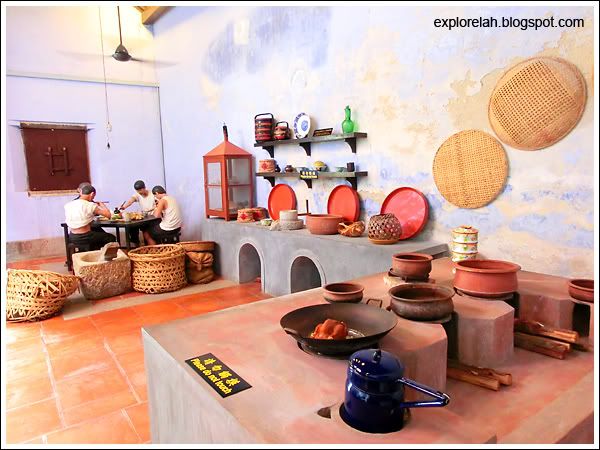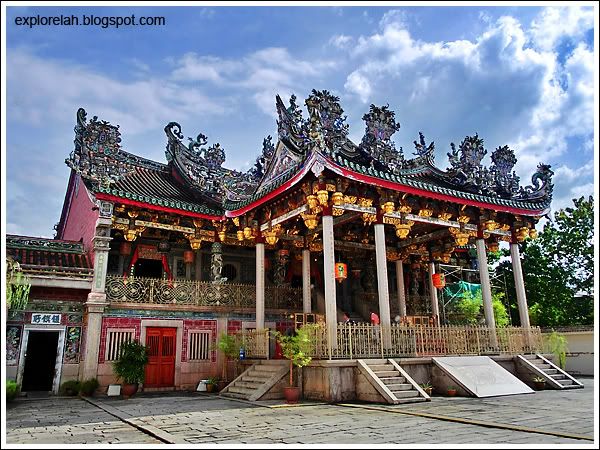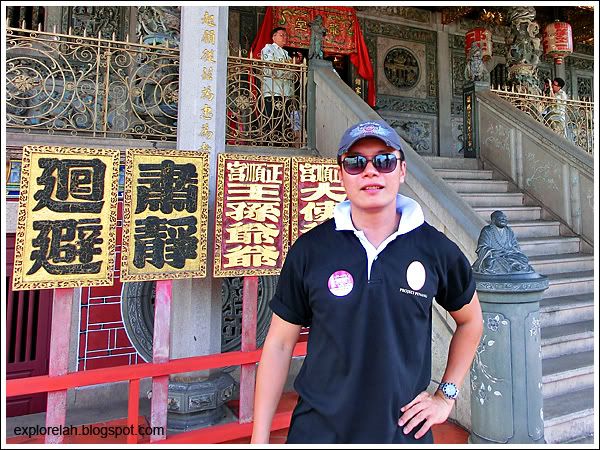Date of Exploration : 9 Dec 2011
Embellishing a cobalt blue enchantment over Penang,
Cheong Fatt Tze Mansion poses a pressence as famous as the island-state's laksa on the world map. When I first heard about the mansion and saw photos of its facade some years ago, I wondered why is it blue? The flambouyant indigo scream for attention sits on the verge of either being ostentatiously
obiang (Hokkien for 'tacky') or considered avant garde with a
debonairesque nod from the chic-chic crowd.
My first visit to the Blue Mansion, an affectionate moniker it has come to be known by, was in 2009. I was disenchanted during that visit. My disappointment arose from the snooty tone of speech that our mansion's tour guide used. She came across as taking too much pride in her knowledge about the mansion and literally talked down to the us. On top of that, the strict
no photography rule inside Cheong Fatt Tze Mansion was cyanide for a shutterbug like me. What's more, house staff trailed tightly behind us every step of the way to make sure we obeyed the rules and followed the group. It felt like we were sheeps being herded. The whole tour was overtly commerical and contrived.
Fast forward to December 2011. I got a chance to explore Cheong Fatt Tze Mansion again with
Project Penang and the experience was wholly different. Our mansion guide was personable, knowledgeable and had that rare gift of humour that made history so much more fun! And we were unusually granted the opportunity to take photos within the house! Only guests staying in the mansion are allowed to take photos so the photos you see here are a rare peak into the interior from someone who's yet to be a paying guest. Don't you dare say I am cheap! Hahaha...
 |
| Daily guided tours of Cheong Fatt Tze Mansion in English are at 11:00am, 1:30pm and 3:00pm. Admission charge : RM12.00 / person. |
So back to the question... why is the dwelling blue? Well, the superstition-laden reason is that white, a common colour for buildings in those days, is associated with the colour of death. In Chinese traditions, a funeral is referred to as 'White Business' (做白事) where mourners don white clothes as a sign of bereavement and reverence of the dead.
Out of all the other colours, Cheong Fatt Tze decided that his Penang abode shall be blue. Perhaps because blue is the colour of the sky, an auspicious allusion to heaven?
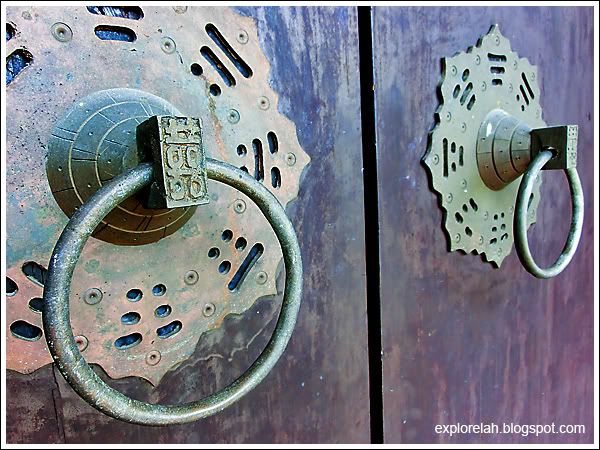 |
| It's a closed-door policy to photography within the mansion. No photo-taking is allowed inside the house unless you are a guest staying with the heritage hotel. |
With that tidbit on the rationale behind the building's blue colour, my in-depth discovery of Cheong Fatt Tze Mansion began... where every brick, tile and fixture embraced within them the fine art of
fengshui and the legacy of a man whose dexterity and brilliance proliferated the pressence of Southeast Asia in the Western world.
 |
| I think rickshaw pulling would trump any cardio punishment I endure at the gym to keep fit. Back in the late 1800s, rickshaw pullers earned a scant 3 cents for about 1km and for 20 cents, the transport can be at the hirer's disposal for an hour. |
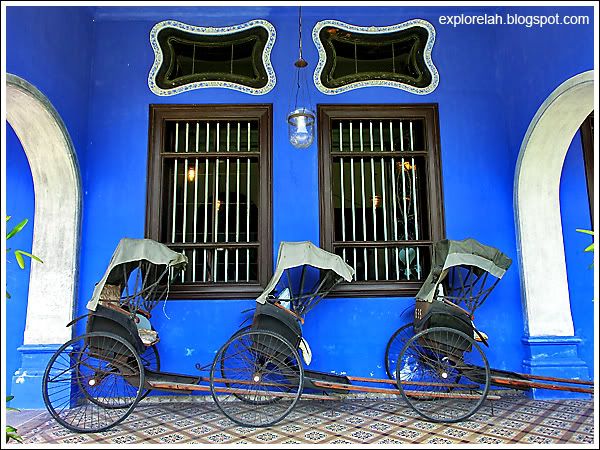 |
| Due to the low cost, rickshaws were a popular mode of conveyance. By the turn of the century in the early 1900s, rickshaws gave way to trishaws where pullers became riders ferrying passengers in a carriage attached to a bicycle. |
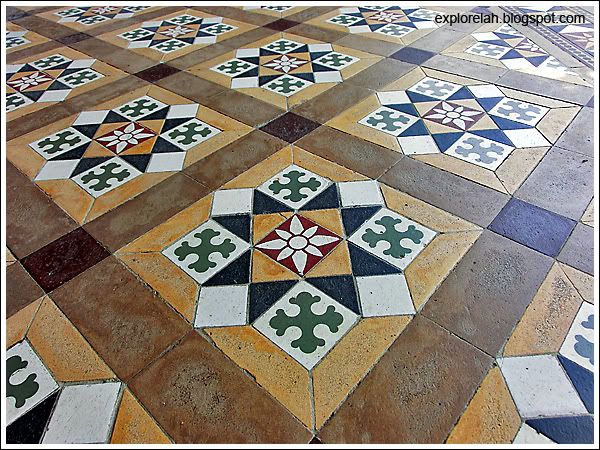 |
| Tilework at the entrance hall of Cheong Fatt Tze Mansion. The ingenuity of having the tiles in bite-size is so that different arangements would yield different designs. When you're at the mansion, compare the tilework outside the hall with the inside ones and you'll notice their subtle but congruent differences. |
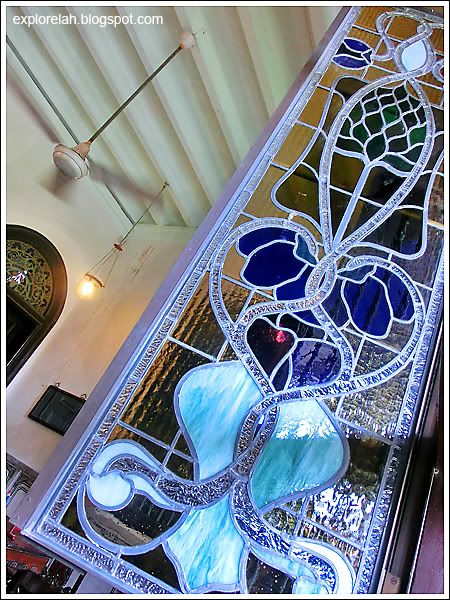 |
| Cheong Fatt Tze Mansion is a portmanteau of decorative influences drawn from both the Eastern and Western hemispheres which reflected the globetrotting lifestyle of its owner. |
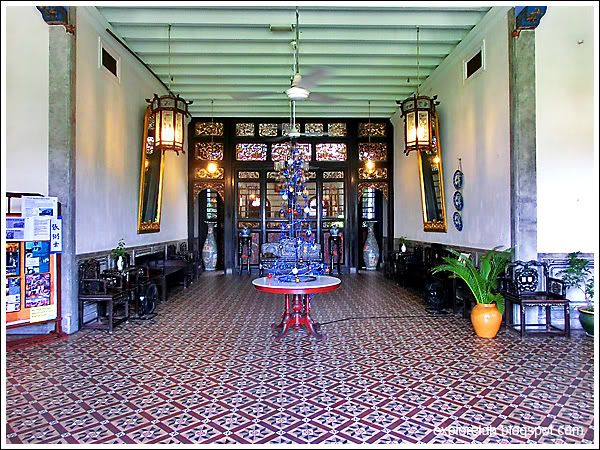 |
| Upon stepping into the Blue Mansion, one is welcomed by a spacious entrance hall where guests await the reception of Cheong Fatt Tze. There are holes disguised as carvings on the wooden screen where women of the house can peer at the guests as women had a subservient standing to men back in the olden days. |
 |
| Right side of the entrance hall with ornate rosewood furnishings inlaid with mother of pearl as its focal piece. |
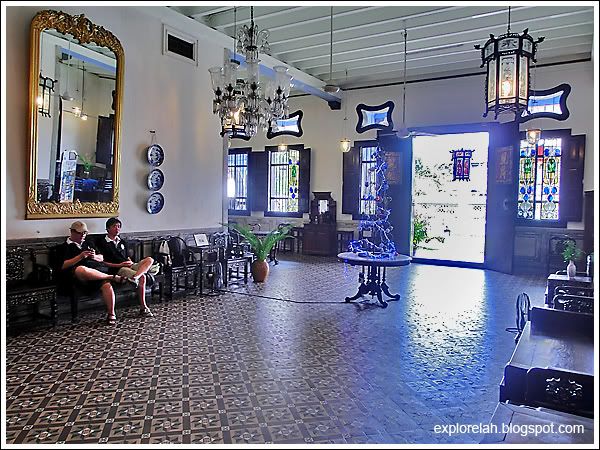 |
| View from inside the hall towards the entrance. |
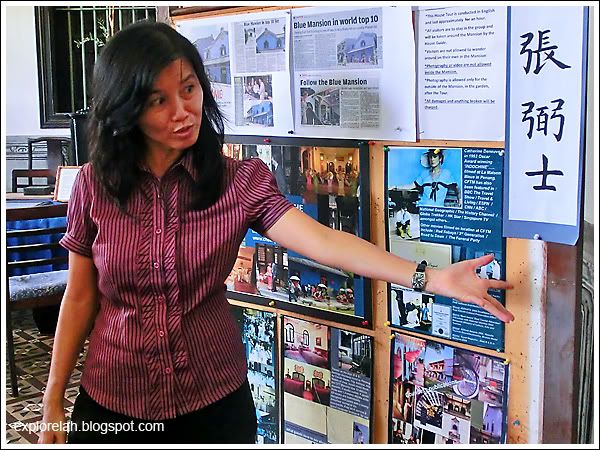 |
| Our animate guide sharing the history of Cheong Fatt Tze Mansion. It was built in the late 1800s as the Southeast Asian home of the trader born in 1840. |
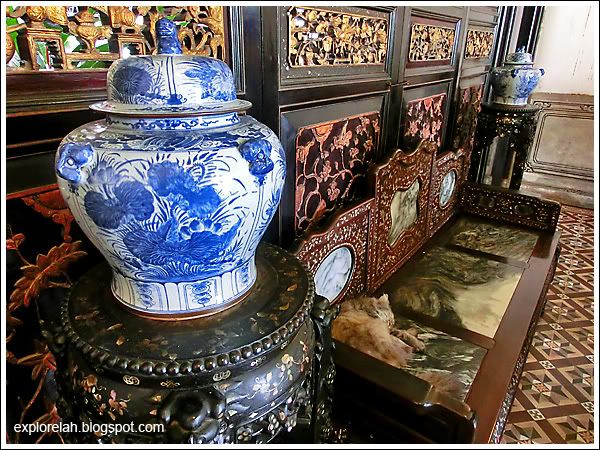 |
| Cheong Fatt Tze hailed of humble beginnings and built a massive entrepreneurial empire that dealt in agricultural products (rubber, coffee and tea) before furthering his wealth with banking. |
 |
| Garfield would be so jealous! |
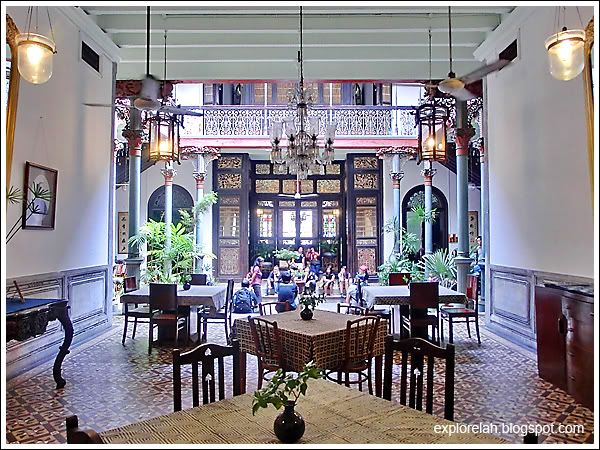 |
| View from the inner dining hall looking out into the open-air court. |
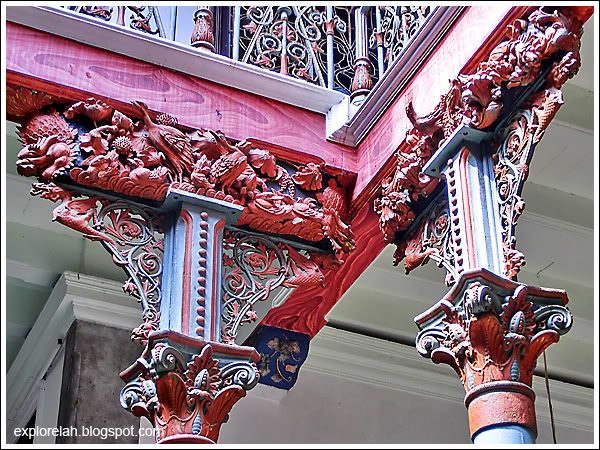 |
| European frieze and metal lacework adds whims and sophistication to a traditionally Chinese house. The mansion is built with a mindfulness of the five elemental principles of geomancy - Metal, Wood, Water, Fire, and Earth (金、木、水、火、土). |
 |
| More than just a drainage hole, this obscure opening at the central courtyard has a major fengshui function that is in the realm of rocket science! Shan't divulge too much here but pay attention to what your guide has to say about it. |
 |
| One of the rooms in the mansion is converted into a time portal where yester-year artifacts used by the family are exhibited. |
 |
| With a staircase like this, it's hard not to make a grand entrance! |
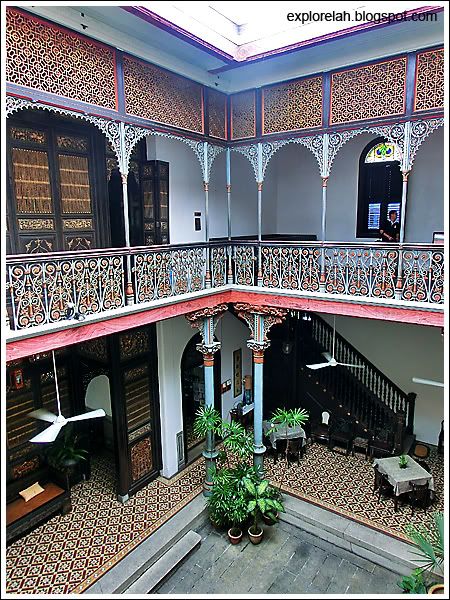 |
| View of the central courtyard from the second level. |
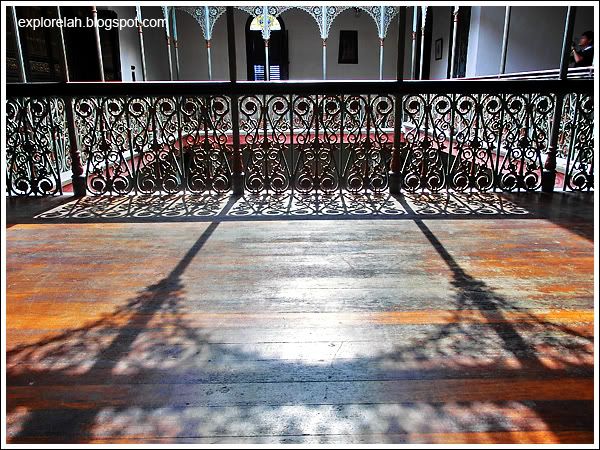 |
| Nostalgia is sometimes like a beautiful shadow. |
 |
| This is the one place that makes it okay is to feel the blues. |
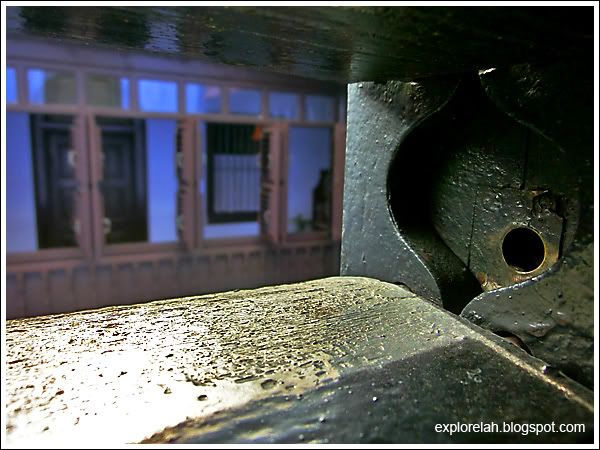 |
| The shutter mechanism of the windows is ingeniously designed to embody the Taoist philosophy of feminine and masculine. When the shutters are closed, their ridges form the interlocking curves of yin-yang. |
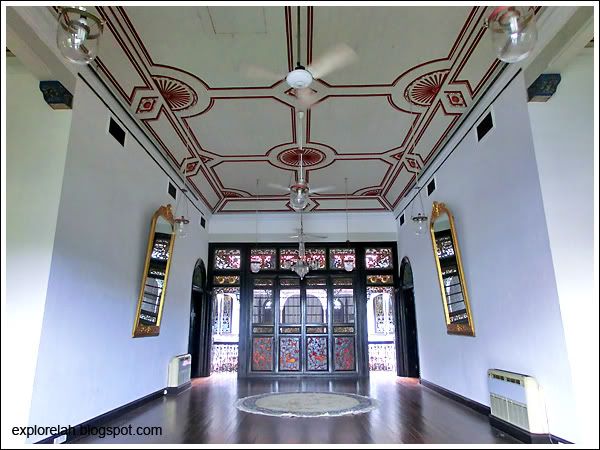 |
| Hall for entertainment on the second level with meeting rooms at both sides. |
 |
| The house is filled with intricate decoratives of the West and East. Cheong Fatt Tze has an assembly of some of the finest 剪粘 'jian nian' (cut and paste) mastery outside of China. |
 |
| Originating from the Ming Dynasty Wanli period (circa 1600), jian nian is the art of cutting shards of coloured porcelain and piecing them together to form a picture. |
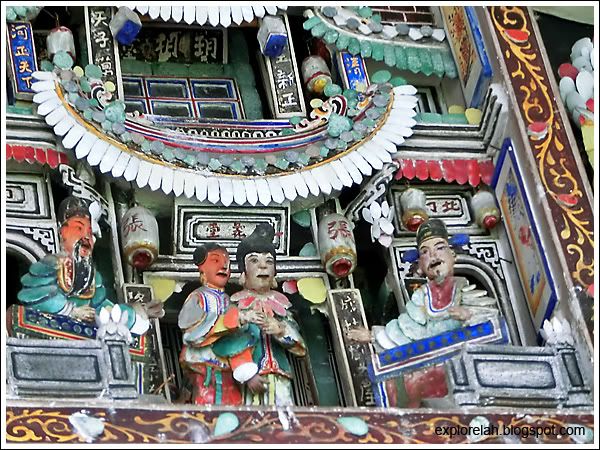 |
| Jian nian images usually depict auspicious scenes that herald good omen. |
 |
| The latticed stairwell reminds me of a lace collar on an English blouse. |
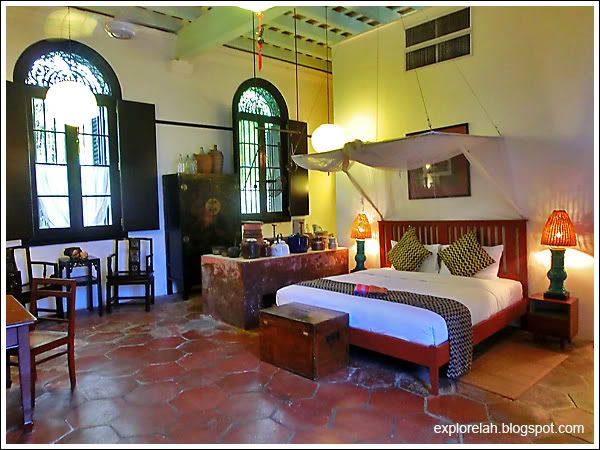 |
| Cheong Fatt Tze Mansion offers most of its 38 rooms as hotel accomodation and its dining halls for events and functions. |
 |
| Don't I look like I belong here? LOL. |
Just looking at the mansion's visage, I would never have imagined that its construct and interior decor hid so much careful thought and traditional artistry.
Cheong Fatt Tze Mansion is what I would consider the Mecca of fengshui and well worth a visit to learn the fascinating wisdom of a resplendent bygone era that still make its echo heard today!
Address : 29, Church Street, 10200 Penang, Malaysia
Tel : 604-264-2929
Opening Hours : 9.30am - 5.00pm daily (incl. P. holidays unless specified)
Admission : Adult - RM12.00, Child - RM6.00 (below 6yo free)
